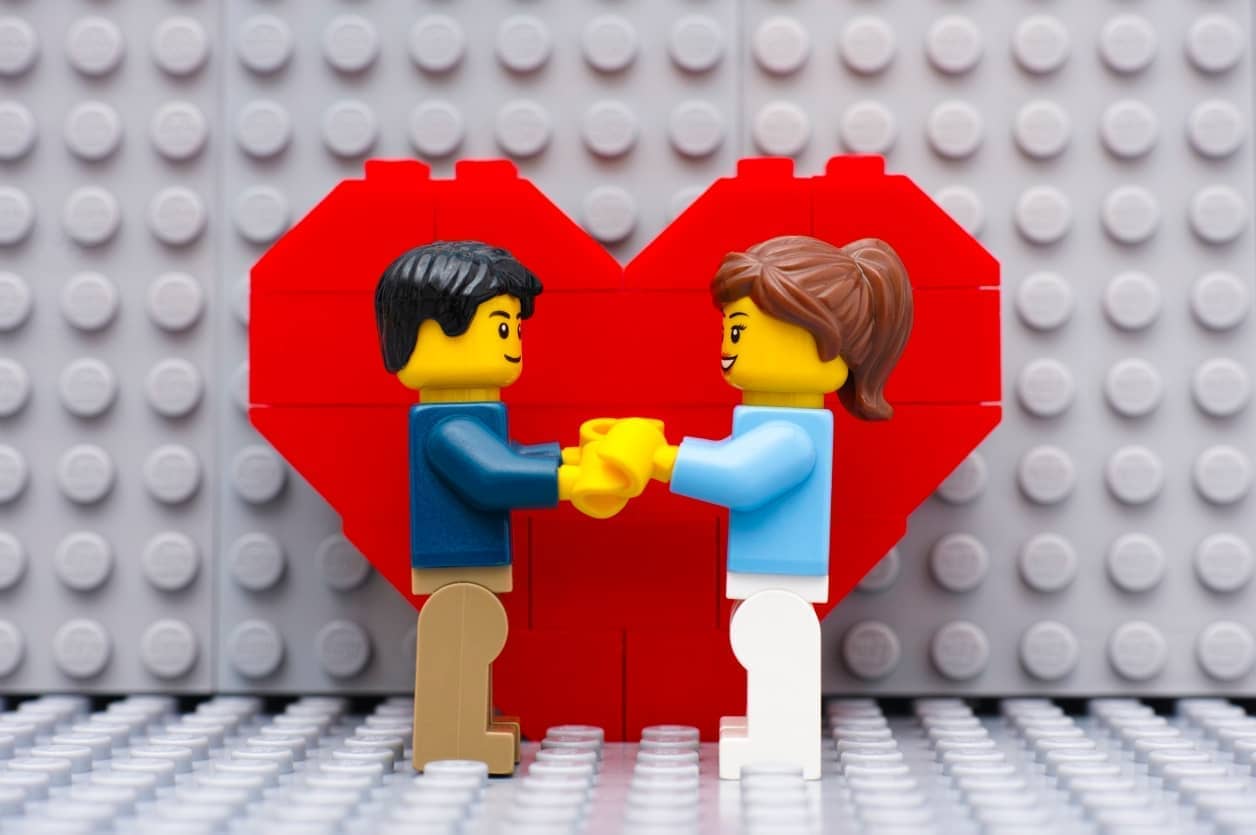So, is it farewell to the Friends Cat Grooming Car playset with Kitten, and the Disney Princess Ariel, Belle and Cinderella set? And what about Olivia’s Electric Car toy, Eco Education Playset? Or the Ninjago Legacy Fire Dragon Attack? Or the City Great Vehicles Refuse Truck?
Lego, you may have gathered, is to eliminate gender stereotypes from its products, including labelling that marks toys for boys or girls. Look up Lego for boys or girls on Argos or similar, and you’ll see the full horror of what that entails. The girls’ stuff has a pink or mauve element plus a kitten or a princess or a castle or a hairdresser (though the Eco Education set has its very own wind turbine). The boys’ is either about construction or a marauding beast or something out of Star Wars. It is very good news that the divide is going to go. Lego is Danish, and about the wokest company this side of the Atlantic, but sometimes, it gets things right. And moving away from the gender divide in its toys is a good thing.
Toymakers may in future be a little less cynical about how they market their products
There’s something similar afoot in California where there’s now a law to oblige big retailers from 2024 to provide gender neutral shopping sections for child-care items and toys.
Let me tell you why this is a reason to rejoice if you’re a parent. It’s because the whole pink and blue lark when it comes to children’s toys is the biggest moneymaking scam invented by the dark arts of the retail sector. Take a toy, any toy…a little piano, say, or a scooter or a mini blackboard. Nothing gendered about those, you might think. But then if you’re a clever manufacturer, you’ll produce them in blue and pink (all right, the frame of the blackboard). Bingo, at a stroke, families with a boy and a girl, will feel obliged to buy two items instead of one. Because the girl is going to want the pink version of whatever it is, the boy would rather die than have a pink anything (unless he’s the hero of one of the avant garde children’s books I keep getting, where boys are terrifically at ease with their lace and pink side). And so…you double your sales.
There is, in the nature of the thing, nothing particularly gendered about scooters. But make it hideous pink, add a bit of glitter and maybe some streamers out of the handle, and it becomes, at a stroke, unfit for most boys. You could see what the manufacturers were at when you went into an old fashioned toy shop…the girls’ aisle had quite a few of the same items as the boys’, but in a format that made them unfit for a boy; the boys’ stuff was dark. Gullible parents and grandparents went along with all this, and instead of toys being good for child’s play of either gender, and capable of being handed down from sibling to sibling, they could only be shared by one sex or the other.
The solution, obviously, is to make toys neither one thing nor the other. A red scooter is good for either sex; a black piano ditto, a wooden blackboard the same. Actually, most of the girly stuff is plastic, and the vileness of the pink or mauve is accentuated by the medium…people, I give you My Little Pony.
In my case, it didn’t matter. My daughter is now 14 and has, alas, grown out of Lego, but in her childhood she detested pink and glittery anything; she tore a princess dress off before she could even speak; in short, she was very cheap to dress because she simply wore her brother’s hand-me-downs. Ditto the toys. When she was taken to a Build A Bear workshop, she unhesitatingly opted for a bear in a fetching camouflage green, and called him Johnny English. Before she realised it was fashionable, she was non-binary in dress and toys. All I can say is, it was fine by me. As for the Californian initiative on gender neutral clothes and accessories, that too is good news. There’s nothing about a nice cream Babygro that designates it for either sex. And frankly the baby doesn’t mind. Same with blue or red jumpers. But as with toys, it means the clothes can go twice as far and be worn by brothers and sisters indifferently.
Obviously, you can take the labels off Lego sets, but you can’t take the gendered character of the things away. It never works if you try to engineer outcomes. Girls on the whole will tend to go for kittens, flowers and princesses; boys as a whole will tend to go for weapons and construction sets. (Both sexes quite like train sets. And mini baking kits are fine for both.) So, you can take away the Lego for Girls label from the Princess playsets, but the great majority of the takers will be girls. And that’s fine. Same goes for Minecraft. You tend to get boys using it for tanks and weaponry; girls will construct gardens with flowers and ponies. That’s just the way things tend to be, and you might say, it shows that gender isn’t a construct, but inherent.
Let’s not go there just now though. Just rejoice that toymakers may in future be a little less cynical about how they market their products. And if I were buying Lego for children, I’d just get a pile of bricks of mixed sizes and colours and let them make what they like. Those stupid sets always have tiny bits that go missing.







Comments